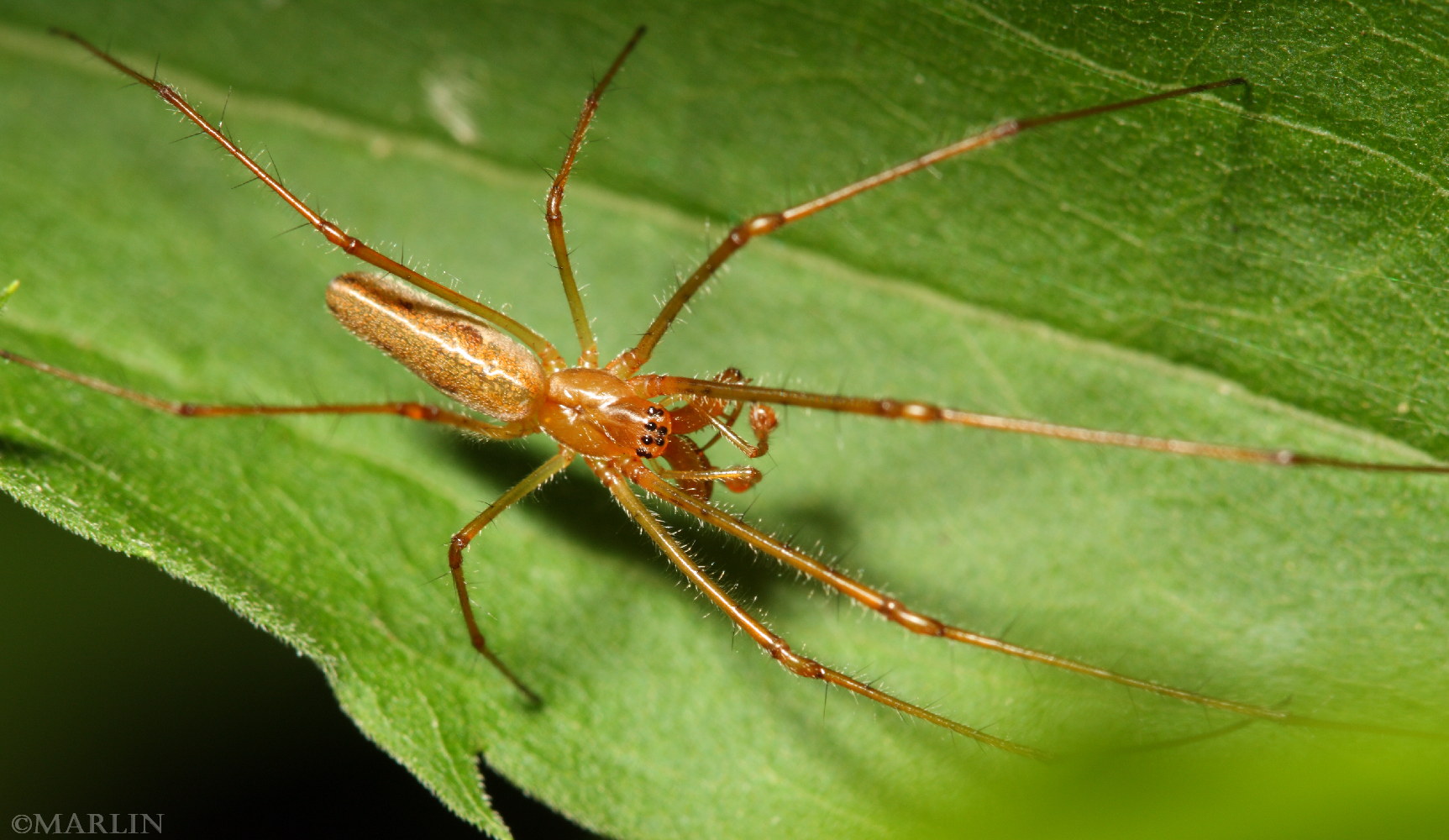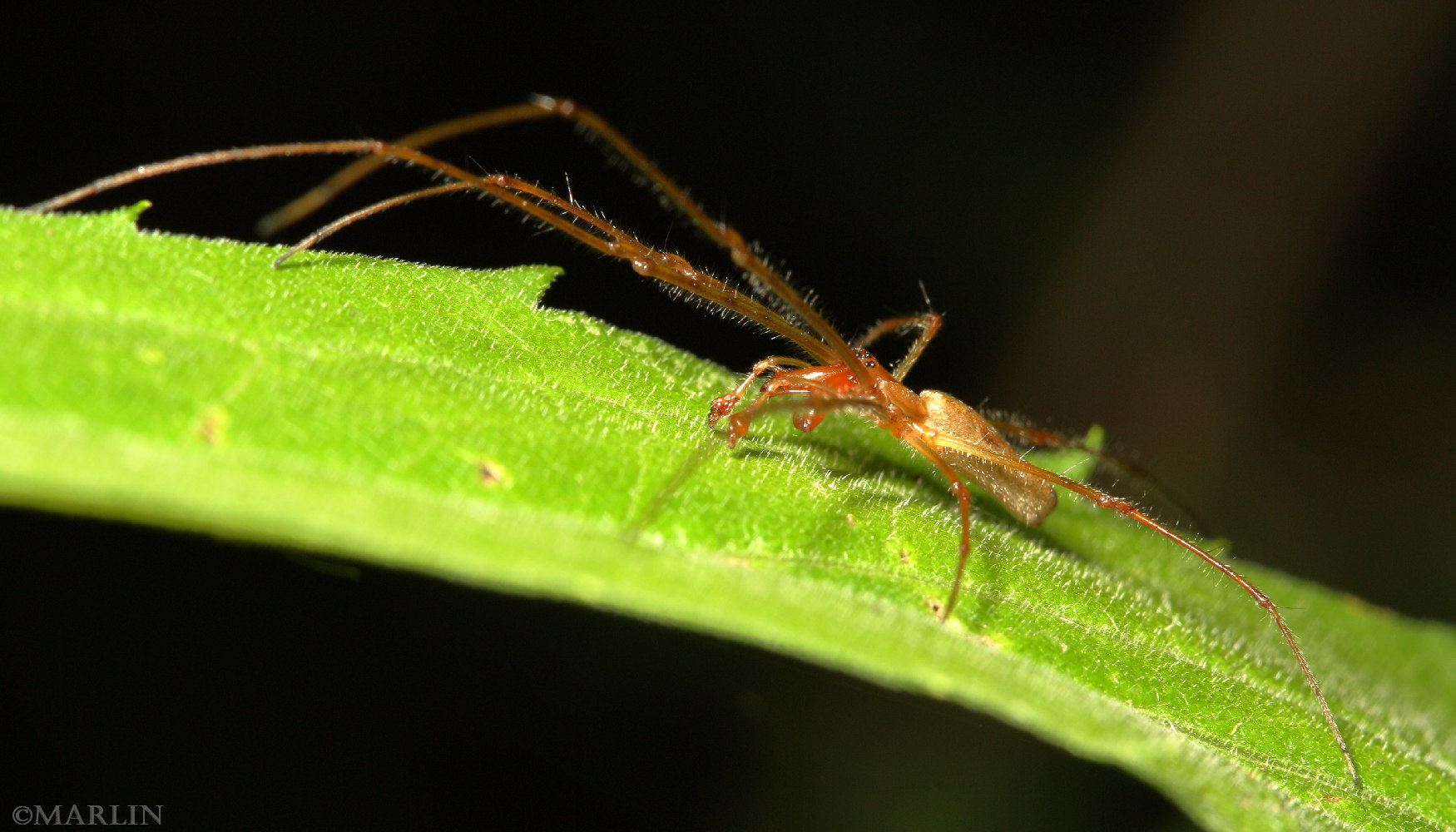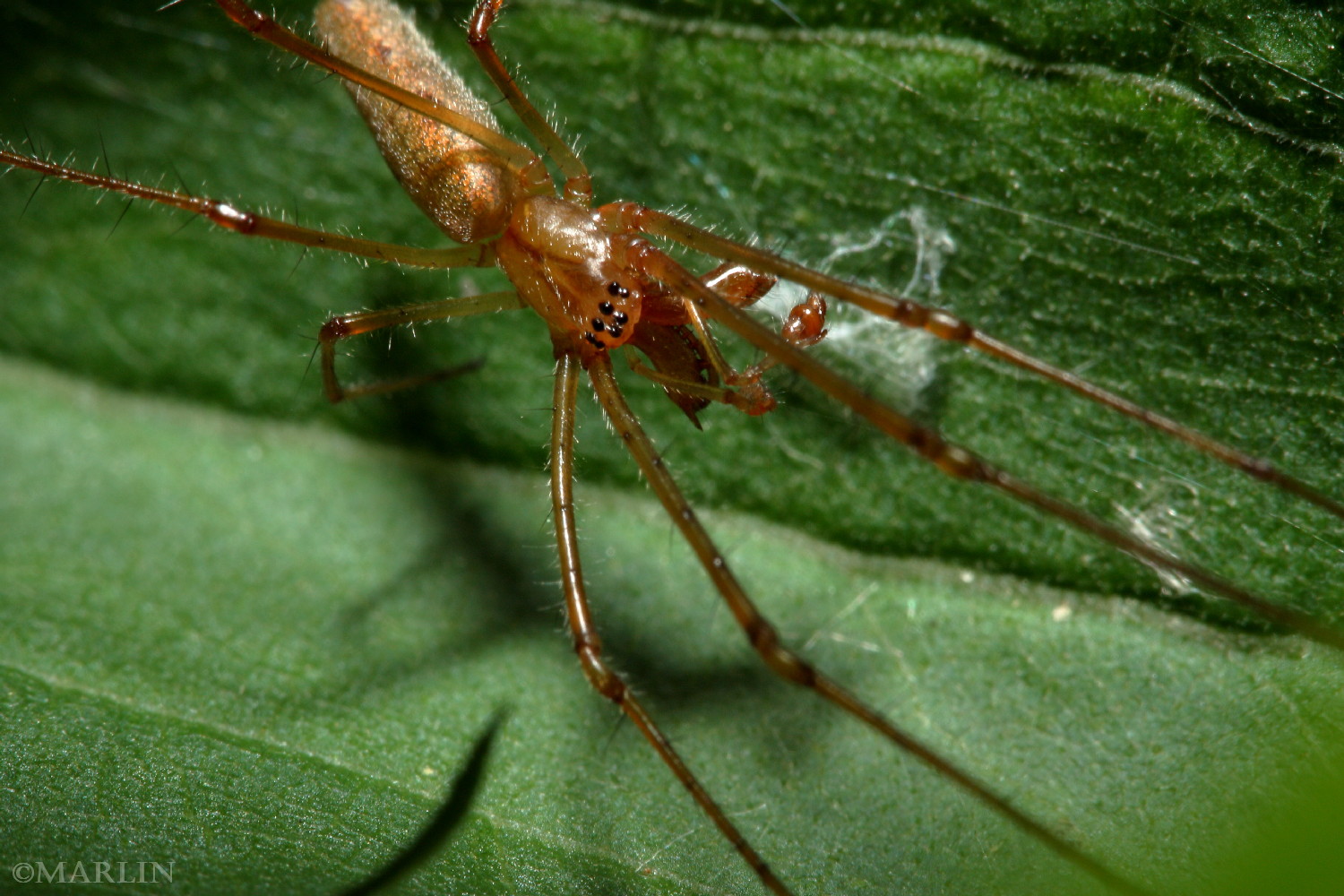Long-Jawed Orb Weaver – Tetragnatha laboriosa
 Live female spider photographed at DuPage County, Illinois. Size = 10mm. Family Tetragnathidae
Live female spider photographed at DuPage County, Illinois. Size = 10mm. Family Tetragnathidae
Larger spiders in this family (of which this is one) are often found near water, especially moving water of rivers and streams. They build orb webs in the horizontal plane, often just inches above the surface of water where they can catch emerging insects like midges, mayflies, and stoneflies. Smaller species build webs in fields and meadows, often in trees and shrubs. [1]
I found many of these huge spiders at the edge of the west branch of the DuPage River at Warrenville, Illinois. They had long “lifeline” of silken threads strung about in low foliage all allong the edge of the water. They were using these webs as quick avenues between plants, and they moved quickly and easily great distances, seemingly through thin air.
Tetragnathid spiders are usually easy to identify by their eponymous huge, powerful chelicerae (jaws) and long, slender abdomen. Like the other family of orb weavers, the Araneidae, these spiders have eight eyes and 3 claws on each tarsus. There are about 25 species in North America [1].
The oldest fossil record of an orb-weaver is from the Lower Cretaceous. Several fossils provide direct evidence that the three major orb weaving families; Araneidae, Tetragnathidae and Uloboridae had evolved by this time, about 140 million years ago.
Spiders Main | Spiders Index | Orb Weavers | Jumping Spiders | Nursery Web
Tree Encyclopedia / North American Insects & Spiders is dedicated to providing family-friendly educational
resources for our friends around the world through large images and macro photographs of flora and fauna.



